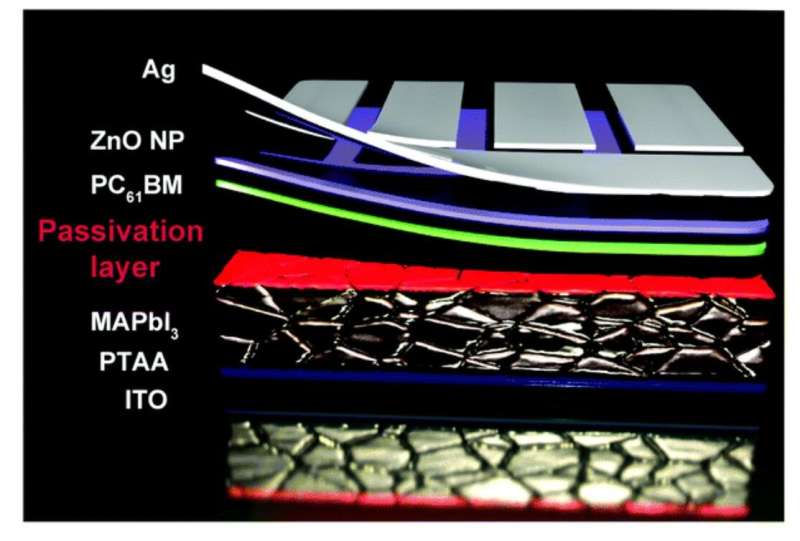Schematic of inverted PSCs with a passivation layer. Credit: UNIST
A research team, led by Professor Hyesung Park in the Department of Materials Science and Engineering at UNIST has succeeded in manufacturing potentially high efficiency, stable, and scalable perovskite solar cells (PSCs) via vacuum deposition apparatus, a method of fabricating organic light-emitting display devices (OLEDs). Such a method is also advantageous for the mass production of batteries, which is expected to further accelerate the commercialization of the PSCs, according to the research team.
In this study, the research team demonstrated highly efficient and stable PSCs with a vacuum-processed Ruddlesden–Popper (RP) phase perovskite passivation layer. By controlling the deposition rate of the RP phase perovskite, which directly influenced its crystallographic orientation, the research team successfully obtained a highly ordered 2D perovskite passivation layer.
The 2D perovskite layer passivated the bulk perovskite defects and promoted the charge transport efficiency in the PSC. As a result, the BABr (V) inverted PSC has achieved a champion PCE of 21.4% in the resulting device with outstanding humidity and thermal stability. This number is by far the highest ever achieved for PSCs formed by vacuum deposition.
In addition, it showed enhanced long-term operational stability, such as maintaining 62% of its initial PCE (average) when operated for 1,000 hours under 60–70% relative humidity at room temperature, even without device encapsulation.
"Our findings provide a new perspective toward further improving the performance of PSCs by mitigating nonradiative recombination pathways in perovskites," noted the research team. The research is published in Energy & Environmental Science.
More information: Yunseong Choi et al, A vertically oriented two-dimensional Ruddlesden–Popper phase perovskite passivation layer for efficient and stable inverted perovskite solar cells, Energy & Environmental Science (2022). DOI: 10.1039/D2EE00759B
Journal information: Energy & Environmental Science
























